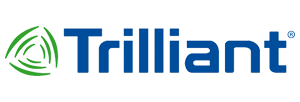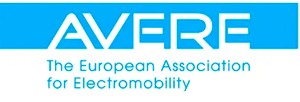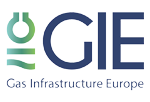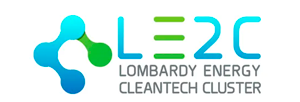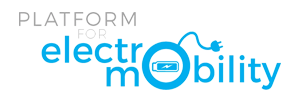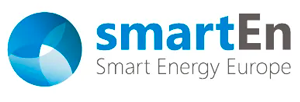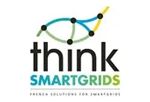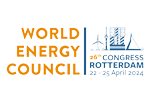The Digital Power Plant of the Future: Innovation, Intelligence, and Integration with Smart Grid Technology
)
- Event: Enlit Europe 2024
- Date: 23rd October 2024
- By: Kevin O’Donovan, Emily Stifel, Ross Marcinko, and Giovanni Bodega
- Estimated Read Time: 5–8 minutes
Introduction: Redefining the Future of Power Generation
At Enlit Europe 2024, the Power Generation Hub was buzzing with conversation—and for good reason. The session titled “The Digital Power Plant of the Future” gathered subject matter experts and industry leaders to explore how the convergence of digital technologies, automation, smart grid technology, and human-centred innovation is revolutionising energy infrastructure.
Expertly moderated by Technology Evangelist Kevin O’Donovan, with contributions from Emily Stifel (AXPO Power), Ross Marcinko (Landis+Gyr), and Giovanni Bodega (Sergie), this highly anticipated forum delved into what the next-generation power plant actually looks like—from high-tech digital twins to intelligent grid-edge sensors and adaptive legacy infrastructure. Across the board, one message resonated: digitalisation isn’t just about installing new tools—it’s about transforming how we work, collaborate, and think.
Digital Is the Easy Part—Humans Are the Challenge
Kevin O’Donovan set the stage by addressing the trifecta of transformation in power plants: technology, power system diversification, and human behaviour. “Technology is the easy bit,” he quipped. “It’s when us people get involved that things start to get fairly complicated.”
O’Donovan highlighted how digitalisation—in the form of cloud-based data storage, sensor networks, and digital twins—has already become ubiquitous in energy. From system design to operations to decommissioning, the digital twin power plant is becoming foundational in lifecycle management. Furthermore, generative AI is opening new avenues for materials research (like advanced battery chemistry) and operational modelling.
But digital integration alone is not enough.
“The real challenge,” said O’Donovan, “is breaking down data silos within organisations, addressing cybersecurity, and helping people accept changes in workflows and power dynamics.” He emphasised that as technologies evolve, we must also bridge cultural gaps within organisations—between departments, generations, and job functions.
Technological Advances: The First True Digital Power Plant
Emily Stifel from AXPO Power offered the first concrete example of a fully digitalised power plant in operation today. Located in Switzerland, this seemingly unremarkable hydropower plant is anything but traditional beneath its surface.
Stifel shared how AXPO’s transformation began with the goal of creating a completely paperless working environment—what she described as a “single source of truth.” Instead of relying on outdated, decentralised paper documentation, employees now access over 70,000 digitalised records, updated in real time and accessible via mobile devices.
Key technological highlights include:
- Fully 3D-modelled BIM of the plant
- Augmented and virtual reality integration for inspection and training
- Use of autonomous drones for maintenance tasks
- Real-time data processing in the cloud
- Predictive analytics and machine learning for optimisation and safety
- Digital worker safety technologies for lone employees in remote locations
With over 130 million data points processed daily, the transition is already demonstrating scalable benefits including reduced unplanned downtime and knowledge continuity as experienced staff retire. The plant offers a prime example of how a digital twin power plant functions in practice—supporting more accurate forecasting, efficient workflows, and resilient operations.
Still, challenges remain. Stifel spoke candidly about technical debt—modernising century-old infrastructure—and the difficulty of ensuring reliable digital connectivity in remote Alpine regions. Cultural transformation poses its own hurdles, as the workforce adjusts to a paradigm shift in tools and workflows, particularly among older or less tech-savvy employees.
“We’re not just digitising operations,” she said. “We’re reshaping culture, expectations, and the entire employee experience.”
Metering, Monitoring, and Intelligence at the Grid Edge
Next, Ross Marcinko of Landis+Gyr steered the conversation beyond the plant walls, into the emerging domain of intelligent grid-edge sensors. Representing the industrial, commercial, and grid electricity sector, Marcinko unpacked how measurement technologies have matured—from simple analog meters to digital smart meters—and now toward intelligent, multifunctional sensors that do much more than just track consumption.
“The new generation of meters,” Marcinko explained, “combine billing, operational metering, real-time communications, and computational power—all at the edge of the grid.”
These intelligent devices can:
- Identify power quality issues (e.g., voltage instability, phase imbalance)
- Detect tampering and anomalies for both billing and security purposes
- Support multi-protocol communication (e.g., DLMS, Modbus, SCADA)
- Perform local computation for edge analytics (eliminating latency)
- Control grid-connected devices like inverters, enabling real-time adjustments
Marcinko further noted that global priorities around renewable integration, decentralised grid models, and electrification (especially via EVs) require power infrastructure that is responsive and data-driven. “You can’t build a virtual power plant without data,” he said, agreeing with O’Donovan that without precise monitoring and control capabilities at the edge, smart grid technology won’t live up to its potential.
Digital Revenue Metering (DRM) was presented as an integral component of this transformation. By leveraging standards like IEC 61850 (digital substation frameworks), utilities are already experiencing CapEx and OpEx reductions thanks to decreased wiring, modular installations, and protocol harmonisation.
Transforming Legacy Plants for a Flexible Future
Wrapping up the session, Giovanni Bodega of Italian utility Sergie explored another critical perspective: how to modernise existing infrastructure to meet tomorrow’s flexible grid demands.
Drawing from his operational experience managing combined-cycle gas turbines and renewable installations, Bodega highlighted several key imperatives for future-proofing mid-life assets:
- Flexibility: Plants must ramp up and down quickly to balance volatile supply (e.g., solar) and demand.
- Multi-Fuel Capability: Transitioning from natural gas-only models to blends with hydrogen or biofuels.
- Maintenance Optimisation: Shifting from scheduled to predictive maintenance using sensor data.
- Standardisation: Leveraging plug-and-play modular components for faster upgrades and integration.
- Digital Integration: Centralising data for simplified monitoring, KPIs, and anomaly detection.
Bodega shared a live dashboard screenshot showing multiple plants operating at different loads throughout a single day—evidence of the growing need for dispatchable, dynamic generational assets. One of the most promising developments, according to Bodega, is in-house development of machine learning models geared specifically toward anomaly detection and predictive maintenance in power plants.
“We’re not waiting for a vendor to come along with one-size-fits-all tools,” he said. “We’re developing models suited to our conditions and data, which is more cost-effective and precise.”
The company’s internal consolidation of production data into a unified warehouse has allowed them to build adaptive indicators, run simulations of design changes, and automate several operational tasks, all while upskilling engineers for long-term digital leadership.
Looking Ahead: Copilots, Not Replacements
In the Q&A sessions, all speakers reiterated that technology’s role is not to replace people—it’s to empower them. From generative AI to autonomous drones and intelligent meters, the goal is to create an environment where the workforce is augmented, not sidelined.
Stifel highlighted that younger employees are more inclined to stay in remote or technical roles when they’re provided with modern, intuitive tools. Meanwhile, seasoned workers become more productive when relieved of administrative burdens through automation and support systems.
O’Donovan closed the session with a reminder that even as technologies like quantum computing and fusion energy loom on the horizon, attention must remain fixed on present-tense challenges and how people adapt to them.
“Digitalisation is inevitable,” he said. “The real work—and reward—comes in preparing people and processes to thrive within it.”
Visual Suggestions:
- Infographic: “The Anatomy of a Digital Power Plant”
- Comparison Chart: “Then vs. Now: Evolution of Grid-Edge Metering”
- Pull Quote: “Technology’s the easy bit—it’s us humans that complicate things.” — Kevin O’Donovan
- Sidebar Feature: “10 Benefits of Predictive Maintenance in Power Plants”
- Image Screenshot: Real-Time Dashboard of Sergie’s Combined-Cycle Operations
Conclusion: A Tipping Point for Power Generation
This session at Enlit Europe 2024 solidified a shared conviction: the digital power plant of the future isn’t merely conceptual—it’s under construction, operational, and steadily being refined. With tools like predictive maintenance in power plants and smart grid technology leading the way, the sector is pivoting toward greater reliability, flexibility, and intelligence.
But innovation requires integration on all levels—not just of technologies, but of teams, departments, and cultural mindsets. Whether retrofitting century-old hydro facilities in Switzerland, embedding intelligence at the metering edge, or adapting legacy gas turbines to flexible load profiles, digitalisation is reshaping energy responsibly and rapidly.
For success, stakeholders must bridge not only hardware gaps but also the behavioural divides across the energy workforce. The next-generation power plant is more than machines—it is a living ecosystem of people, data, and decision-making that reflects the complexity and ambition of the energy transition itself.
Want to see these technologies in action? Visit Enlit Europe's on-demand content hub or connect with the speakers on LinkedIn to continue the conversation.
Explore more sessions from Enlit Europe 2024 and discover how the power sector is forging a smarter, cleaner, and more connected energy future.
Other Past Sessions
-
Event: Enlit Europe 2024 Date: 23rd October 2024 By: Kevin O’Donovan, Emily Stifel, Ross Marcinko, and Giovanni Bodega Estimated Read Time: 5–8 minutes Introduction: Redefining the Future of P ...
-
Event: Enlit Europe 2024 Date: 23rd October 2024 By: Panel Discussion featuring Sebastian Copen, Maxim Suk, Marcia Polti, Jao Raphael, and Nikola Beck Estimated Read Time: 9–10 minutes Introdu ...
-
Event: Enlit Europe 2024 Date: 23rd October 2024 By: Panel Discussion featuring Sebastian Copen, Maxim Suk, Marcia Polti, Jao Raphael, and Nikola Beck Estimated Read Time: 9–10 minutes Introdu ...
-
Event: Enlit Europe Date: 24th October 2024 By: Discussion Panel (Moderated by Ralph) Estimated Read Time: 7–8 minutes Introduction: Rethinking Dispatchable Power as the Backbone of Net-Zero A ...
-
Event: Enlit Europe 2024 Date: 24th October 2024 By: Kate Willard Estimated Read Time: 15–20 minutes Introduction: Reimagining Industry for a Net-Zero Future Are we decarbonising fast enough—a ...
-
Event: Enlit Europe 2024 Date: 23rd October 2024 By: Gaia Gallotti (IDC) – Panel Moderator Estimated Read Time: 7–8 minutes Introduction: Charting the Course for the Utility of the Future The ...
-
Event: Enlit Europe 2024 Date: 23 October 2024 By: Toma Bert (Managing Director, ESMIG) Estimated Read Time: 25'30 minutes Introduction: Smart Metering at the Heart of Europe's Energy Revolution ...
-
Event: Enlit Europe Date: 24th October 2024 By: Kim Chen, Moderator and CEO of Innovation Force Estimated Read Time: 10–12 minutes Quick Summary Cleantech startups are driving the next wave of ...
-
Event: Enlit Europe Date: 24th October 2024 By: Beat Petrovic, Senior Analyst at Ember Estimated Read Time: 10–12 minutes Quick Summary Energy flexibility, smart grid solutions, and grid congest ...
-
Event: Enlit Europe Date: 24th October 2024 By: George Biscardini Estimated Read Time: 10-12 minutes Quick Summary Hydrogen energy in Europe, coordinated energy systems, and integrated energy in ...


)
)
)
)
)
)
)
)
)
)






